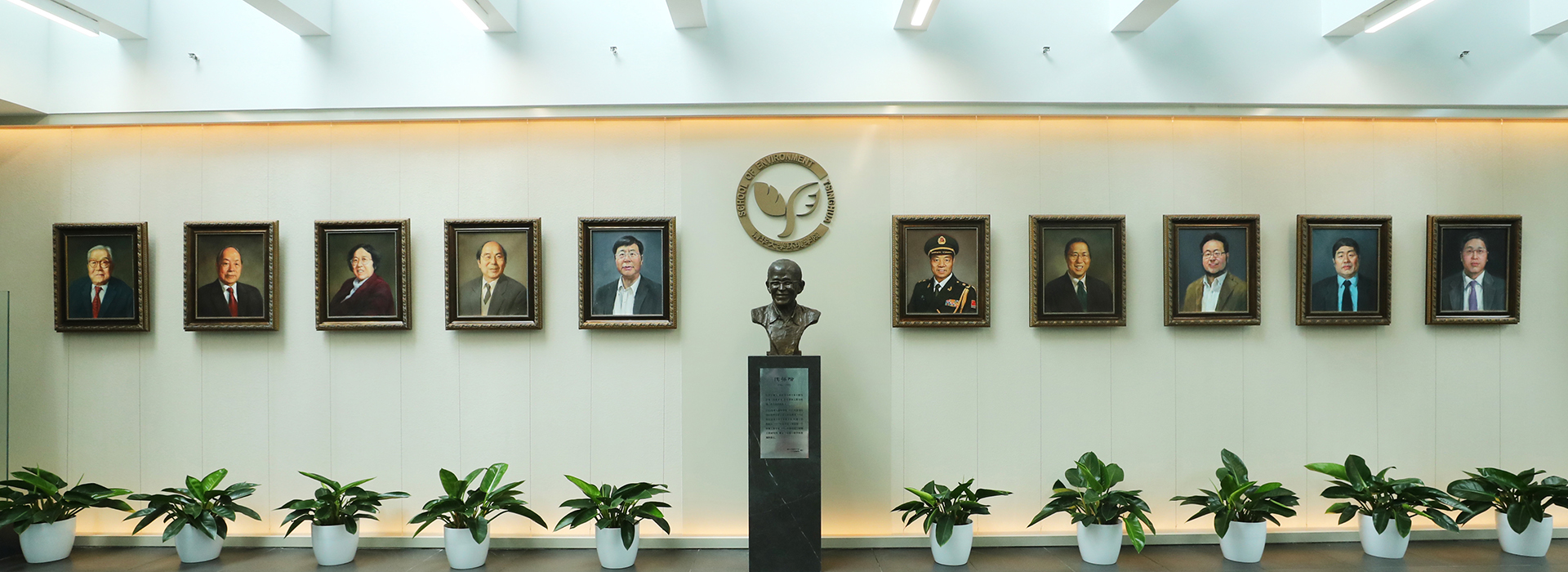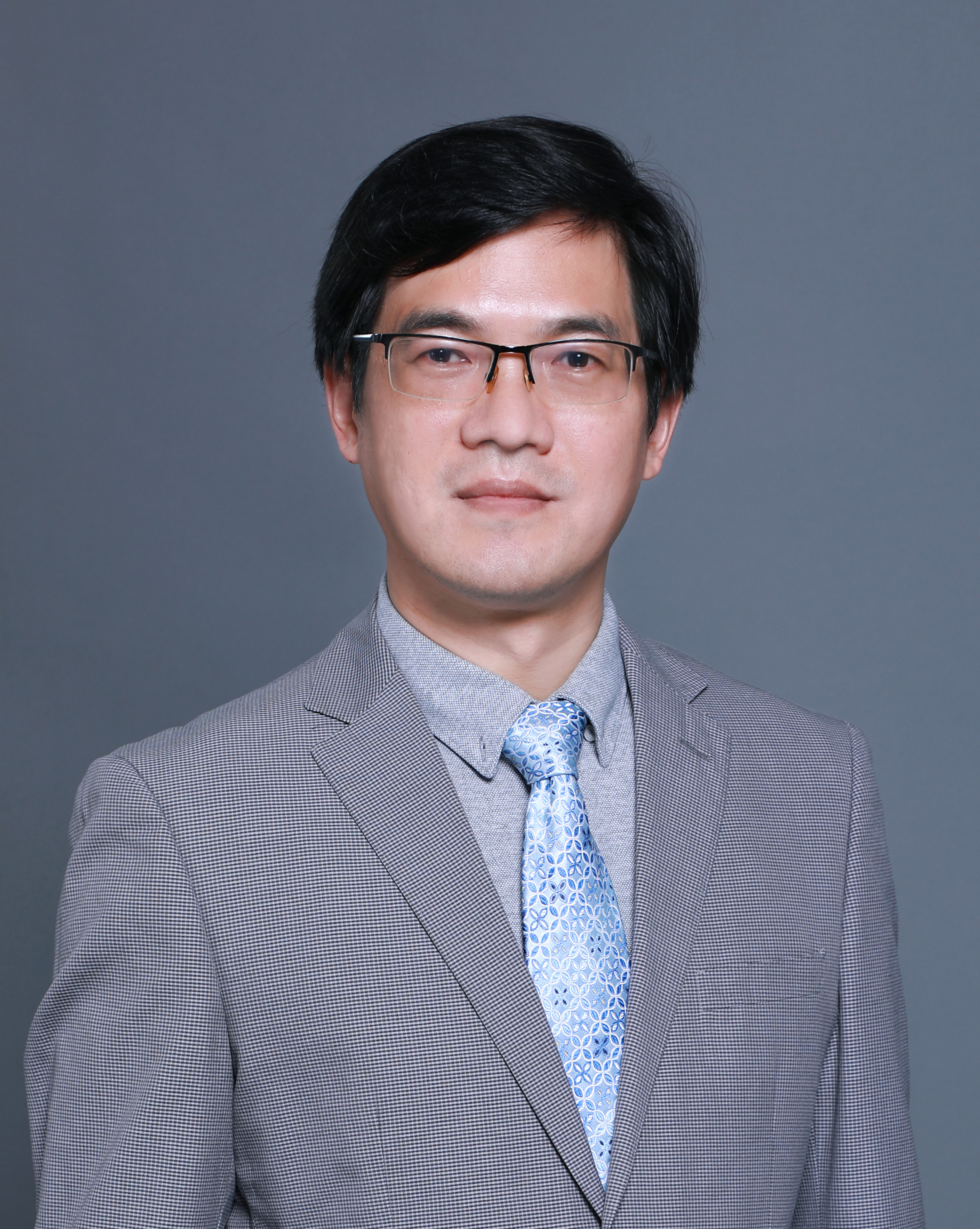2004.9 – 2009.1清华大学环境科学与工程系,工学博士
2001.9 – 2004.7南京大学环境学院,理学硕士
1997.9 – 2001.7南京大学环境学院,理学学士
本站不再支持您的浏览器,360、sogou等浏览器请切换到极速模式,或升级您的浏览器到 更高版本!以获得更好的观看效果。关闭

师资队伍

王斌
 邮箱:thuwb@tsinghua.edu.cn
邮箱:thuwb@tsinghua.edu.cn
 电话:010-62795315
电话:010-62795315
 地点:清华大学环境学院
地点:清华大学环境学院

教育背景
2004.9 – 2009.1清华大学环境科学与工程系,工学博士
2001.9 – 2004.7南京大学环境学院,理学硕士
1997.9 – 2001.7南京大学环境学院,理学学士

工作履历
2012.12-至今 清华大学环境学院,副研究员
2011.11–2012.12 清华大学环境学院,助理研究员
2008.12–2011.11 联合国大学 (日本),Research Associate/Technical Consultant
教学
本科生课程《环境监测方法》
本科生课程《环境演变与全球变化》

学术兼职
中国环境科学学会持久性有机污染物专业委员会 秘书长

研究领域
1、 新兴污染物(POPs,PPCPs等)环境污染分析和源解析
2、 新兴污染物(POPs,PPCPs等)多介质环境行为和模型
3、 化学品环境风险评价和控制技术
4、 新兴污染物(PPCPs)的高级氧化处理技术
欢迎有相关科研兴趣的研究生和博士后联系并加入研究组

研究概况
在研项目
(1) 2017-2020,武南区域水环境污染特征与精确溯源,国家水污染治理重大专项子课题,负责
(2) 2016-2019, 基于手性对映体指纹谱和CMB的PPCPs污染源解析,国家自然科学基金面上项目,负责
(3) 2017-2018,工业园区集中污水处理稳定达标排放技术方案,联合负责
(4) 2016-2020,无意识产生POPs清单的调查方法学,国家自然科学基金国际(地区)合作交流项目,技术骨干
完成项目
(5) 2014-2015 北京市科委科技创新基地培育专项,北运河流域典型PPCPs污染现状与环境风险分析,负责
(6) 2014-2016 清华大学自主科研计划青年教师基础研究专项,负责
(7) 2013-2015 国家自然科学青年科学基金—“基于逸度模型和物种敏感性分布的PPCPs 概率生态风险评价模式研究”,负责
(8) 2013-2015 国家高新技术(863)重点项目子课题—“水中PPCPs物化去除技术”,负责
(9) 2011-2015 法国威立雅国际合作项目— “污水中PPCPs的存在及控制技术”,技术骨干
(10) 2012-2014 美国哈希公司项目—“基于哈希LUMIStox300发光菌毒性的PPCPs生态风险评价”,负责
(11) 2012 环保部环境保护对外合作中心课题—“2012年东亚和东南亚BAT/BEP论坛成员二恶英监测能力建设”,负责
(12) 2011-2012 环保部环境保护对外合作中心课题—“中国重点区域重点行业二恶英减排模式研究”,技术负责
(13) 2009-2011 日本环境省全球环境研究基金项目(C-083) — “东亚地区POPs越境污染和削减对策研究” ,技术负责
(14) 2009-2011 联合国大学-岛津国际合作项目—“亚洲沿海水圈环境监测与管理” ,技术负责
(15) 2007-2008 国家环保总局项目—— “国外化学品环境管理研究”, 主要参加
(16) 2004-2008 国家重点基础研究发展计划(973计划)项目子课题 (2003CB415007) ——“持久性有机污染物生态风险评价模式和预警方法体系”,主要参加
(17) 2002-2004 国家自然科学基金项目(20177008)——“混合有机化合物定量结构-活性相关及联合毒性机制研究” ,主要参加
(18) 2002-2004 欧盟国际合作项目(ICA4-CT-2001-10039)—— “Management Policies for Priority Water Pollutants and Their Effects on Foods and Human Heath: General Methodology and Application to Chinese River Basins” ,主要参加
(19) 2002-2003 国家高新技术(863)项目 (2001AA640601)——“内分泌干扰物的筛选和控制技术”,参加
(20) 2001-2002 国家自然科学基金重点项目(29837180)——“有毒化学品的环境危险性评价基础研究”,参加

奖励与荣誉
2017 国家自然科学二等奖(排名第4)
2016 中国环境科学学会优秀科技工作者奖
2014 中国环境科学学会青年科技奖
2013 教育部自然科学一等奖(排名第4)
2009 清华大学优秀博士学位论文

学术成果
代表性文章
(1) Yizhe Zhang, Bin Wang*, Giovanni Cagnetta, Lei Duan, Jian Yang, Shubo Deng, Jun Huang, Yujue Wang, Gang Yu. Typical pharmaceuticals in major WWTPs in Beijing, China: Occurrence, load pattern and calculation reliability. Water Research. 140, 2018, 291-300.
(2) Han Qu, Ruixue Ma, Bin Wang*, Yizhe Zhang, Lina Yin, Gang Yu, Shubo Deng, Jun Huang, Yujue Wang. Effects of microplastics on the uptake, distribution and biotransformation of chiral antidepressant venlafaxine in aquatic ecosystem. Journal of Hazardous Materials. 2018, 359: 104-112.
(3) Han Qu, Ruixue Ma, Bin Wang*, Jian Yang, Lei Duan, Gang Yu. Enantiospecific toxicity, distribution and bioaccumulation of chiral antidepressant venlafaxine and its metabolite in loach (Misgurnus anguillicaudatus) co-exposed to microplastic and the drugs. Journal of Hazardous Materials. 2018
(4) Lei Duan, Yizhe Zhang, Bin Wang*, Shubo Deng, Jun Huang, Yujue Wang, Gang Yu. Occurrence, elimination, enantiomeric distribution and intra-day variations of chiral pharmaceuticals in major wastewater treatment plants in Beijing, China. Environmental Pollution 2018: 239:473-482.
(5) Wenxing Zhao, Bin Wang*, Gang Yu. Antibiotic resistance genes in China: occurrence, risk, and correlation among different parameters. Environmental Science and Pollution Research, 2018. https://doi.org/10.1007/s11356-018-2507-z
(6) Yang Guo, Huijiao Wang, Bin Wang, Shubo Deng, Jun Huang, Gang Yu, Yujue Wang. Prediction of micropollutant abatement during homogeneous catalytic ozonation by a chemical kinetic model. Water research 2018, 142: 383-395
(7) Wenxing Zhao, Bin Wang*, Yujue Wang, Shubo Deng, Jun Huang, Gang Yu. Deriving acute and chronic predicted no effect concentrations of pharmaceuticals and personal care products based on species sensitivity distributions. Ecotoxicology and Environmental Safety 2017, 144:537–54
(8) Ruixue Ma, Bin Wang*, Lina Yin, Yizhe Zhang, Shubo Deng, Jun Huang, Yujue Wang, Gang Yu. Characterization of pharmaceutically active compounds in Beijing, China: Occurrence pattern, distribution variation and its environmental implication. Journal of Hazardous Materials, 323: 147–155. 2017
(9) Yizhe Zhang, Bin Wang*, Wei Wang, Wenchao Li, Jun Huang, Shubo Deng, Yujue Wang, Gang Yu. Occurrence and source apportionment of Per- and poly-fluorinated compounds (PFCs) in North Canal Basin, Beijing. Scientific Reports 6: 36683, 2017
(10) Wenwen Yan, Qirong Chen, Xiangfu Meng, Bin Wang*. Multicycle photocatalytic reduction of Cr (VI) over transparent PVA/TiO2 nanocomposite films under visible light. SCIENCE CHINA Materials. 2017 , 60 (5) :1-12
(11) Yue Zhao, Gang Yu, Siyu Chen, Siyu Zhang, Bin Wang*, Jun Huang, Shubo Deng, Yujue Wang. Ozonation of antidepressant fluoxetine and its metabolite product norfluoxetine: Kinetics, intermediates and toxicity. Chemical Engineering Journal, 316 (15), 951–963, 2017
(12) Wenhua Shen, Yujue Wang, Juhong Zhan, Bin Wang*, Jun Huang, Shubo Deng, Gang Yu. Kinetics and operational parameters for 1,4-dioxane degradation by the photoelectro-peroxone process. Chemical Engineering Journal 310: 249–258, 2017
(13) Lina Yin, Ruixue Ma, Bin Wang*, Honglin Yuan and Gang Yu. The degradation and persistence of five pharmaceuticals in an artificial climate incubator during a one year period. RSC Adv., 2017, 7: 8280–8287
(14) Pingping Meng, Shubo Deng, Ziwen Du, Bin Wang*, Jun Huang, Yujue Wang, Gang Yu, and Baoshan Xing. Effect of hydro-oleophobic perfluorocarbon chain on interfacial behavior and mechanism of perfluorooctane sulfonate in oil-water mixture. Scientific Reports, 7:44694. 2017
(15) Shentan Liu, Yujue Wang, Bin Wang, Jun Huang, Shubo Deng, Gang Yu. Regeneration of Rhodamine B saturated activated carbon by an electro-peroxone process. Journal of Cleaner Production, 2017, 168:584-594
(16) Pingping Meng, Shubo Deng, Bin Wang, Jun Huang, Yujue Wang, GangYu。Superhigh adsorption of perfluorooctane sulfonate on aminated polyacrylonitrile fibers with the assistance of air bubbles. Chemical Engineering Journal, 2017, 315: 108-114.
(17) Guangsen Xia, Yujue Wang, Bin Wang, Jun Huang, Shubo Deng, GangYu. The competition between cathodic oxygen and ozone reduction and its role in dictating the reaction mechanisms of an electro-peroxone process. Water Research 2017, 118: 26-38.
(18) Lina Yin, Bin Wang*, Honglin Yuan, Shubo Deng, Jun Huang, Yujue Wang, Gang Yu. Pay special attention to the transformation products of PPCPs in environment. Emerging Contaminants, 2017, 3: 69-75.
(19) Ruixue Ma, Bin Wang*, Shaoyong Lu, et al. Characterization of pharmaceutically active compounds in Dongting Lake, China: Occurrence, Chiral profiling and Environmental risk. Science of the Total Environment. 557-558: 268-275. 2016
(20) Bin Wang*, Heidelore Fiedler, Jun Huang, Shubo Deng, Yujue Wang, Gang Yu. A primary estimate of global PCDD/F release based on the quantity and quality of national economic and social activities. Chemosphere 151: 303-309. 2016
(21) Liping Heng, Xieyou Guo, Tianqi Guo, Bin Wang*, Lei Jiang. Strengthening of polymer ordered porous materials based on a layered nanocomposite internal structure. Nanoscale, 8: 13507-13512, 2016.
(22) Guohua Dai, Bin Wang*, Chaochen Fu, Rui Dong, Jun Huang, Shubo Deng, Yujue Wang, Gang Yu. Pharmaceuticals and personal care products (PPCPs) in urban and suburban rivers of Beijing, China: occurrence, source apportionment and potential ecological risk. Environmental Science: Processes & Impacts, 18: 445-455. 2016
(23) Lina Yin, Bin Wang*, Ruixue Ma, Honglin Yuan, Gang Yu. Enantioselective Environmental Behavior and Effect of Chiral PPCPs. Progress in Chemistry. 28 (5):139-148, 2016
(24) Zhixia Zhang, Bin Wang*, Honglin Yuan, Ruixue Ma, Jun Huang,Shubo Deng, Yujue Wang, Gang Yu. Discharge inventory of pharmaceuticals and personal care products in Beijing, China. Emerging Contaminants, 2:148-156, 2016
(25) Qingwei Bu, Bin Wang, Jun Huang, Kai Liu, Shubo Deng, Yujue Wang, Gang Yu. Estimating the use of antibiotics for humans across China. Chemosphere, 144:1384-1390. 2016
(26) Xinyu Lu, Shubo Deng, Bin Wang, Jun Huang, Yujue Wang, Gang Yu. Adsorption behavior and mechanism of perfluorooctane sulfonate on nanosized inorganic oxides. Journal of Colloid and Interface Science, 474: 199-205, 2016
(27) Giovanni Cagnetta, Jun Huang, Bin Wang, Shubo Deng, Gang Yu. A comprehensive kinetic model for mechanochemical destruction of persistent organic pollutants. Chemical Engineering Journal, 291: 30-38. 2016
(28) Liping Heng, Tianqi Guo, Bin Wang*, Li-Zhen Fan and Lei Jiang. In situ electric-driven reversible switching of water-droplet adhesion on a superhydrophobic surface. J. Mater. Chem. A, 3: 23699-23706. 2015
(29) Liping Heng, Tianqi Guo, Bin Wang*, Yuqi Zhang, Lei Jiang. Polymer porous interfaces with controllable oil adhesion underwater. RSC Adv., 5: 102378-102383. 2015
(30) Bin Wang*, Guohua Dai, Shubo Deng, Jun Huang, Yujue Wang, Gang Yu. Linking the environmental loads to the fate of PPCPs in Beijing: Considering both the treated and untreated wastewater sources. Environmental Pollution 2015, 202:153-159.
(31) Guohua Dai, Bin Wang, Jun Huang, Rui Dong, Shubo Deng, Gang Yu. Occurrence and source apportionment of pharmaceuticals and personal care products in the Beiyun River of Beijing, China. Chemosphere 2015, 119, 1033-1039.
(32) Tao Chen, Shubo Deng, Bin Wang, Jun Huang, Yujue Wang, Gang Yu. CO2 adsorption on crab shell derived activated carbons: contribution of micropores and nitrogen-containing groups. RSC Advances, 5(60): 48323-48330, 2015
(33) Muchen Li, Bin Wang, Liping Heng, Lei Jiang. Surface-Independent Reversible Transition of Oil Adhesion under Water Induced by Lewis Acid–Base Interactions. Advanced Materials Interfaces. 2014, 1(9), 1400298
(34) Yao Nie, Shubo Deng, Bin Wang, Jun Huang, Gang Yu. Removal of clofibric acid from aqueous solution by polyethylenimine-modified chitosan beads.Frontiers of Environmental Science & Engineering, 2014, 8(5), 675-682
(35) Qingwei Bu, Bin Wang, Jun Huang, Shubo Deng, Gang Yu. Pharmaceuticals and personal care products in the aquatic environment in China: A review. Journal of Hazardous Materails, 2013, 262 ,189-211
(36) Liping Heng, Xiangfu Meng, Bin Wang, Lei Jiang. Bioinspired Design of Honeycomb Structure Interfaces with Controllable Water Adhesion. Langmuir, 2013, 29(30), 9491-9498.
(37) Zhiguo Cao, Gang Yu, Bin Wang, Jun Huang, Shubo Deng. Human exposure assessment of indoor dust: importance of particle size and spatial position. Environmental health perspectives, 2013, 121 (4), a110.
(38) Jiangmeng Kuang, Jun Huang, Bin Wang, Qiming Cao, Shubo Deng, Gang Yu. Ozonation of trimethoprim in aqueous solution: Identification of reaction products and their toxicity. Water Research, 2013, 47, (8), 2863-2872.
(39) Zhiguo Cao, Heidelore Fiedler, Bin Wang, Tingting Zhang, Gang Yu, Jun Huang, Shubo Deng. Economic status as a determinant of national PCDD/PCDF releases and implications for PCDD/PCDF reduction. Chemosphere, 2013, 91 (3), 328-335
(40) Liping Heng, Bin Wang, Muchen, Li, Yuqi Zhang, Lei Jiang. Advances in Fabrication Materials of Honeycomb Structure Films by the Breath-Figure Method. Materials, 2013, 6, 460-482.
(41) Bin Wang, Jun Huang, Yong Lu, Shinichi Arai, Fukuya Iino, Masatoshi Morita, Gang Yu. The pollution and ecological risk of endosulfan in soil of Huai'an city, China. Environmental Monitoring and Assessment, 2012, 184(12), 7093-7101.
(42) Bin Wang, Jun Huang, Shubo Deng, Xiaoling Yang, Gang Yu. Addressing the environmental risk of persistent organic pollutants in China. Frontiers of Environmental Science & Engineering. 2012, 6(1), 2-16
(43) Qian Sui, Bin Wang, Wentao Zhao, Jun Huang, Gang Yu, Shubo Deng, Zhaofu Qiu, Shuguang Lu. Identification of priority pharmaceuticals in the water environment of China. Chemosphere, 2012, 89(3),280-286.
(44) Liping Heng, Bin Wang, Yuqi Zhang, Lingjuan Zhang, Ben Zhong Tang, Lei Jiang. Sensing Mechanism of Nanofibrous Membranes for Fluorescent Detection of Metal Ion, Journal of Nanoscience and Nanotechnology, 2012, 12(11),8443-8447
(45) Bo Tian, Jun Huang, Bin Wang, Shubo Deng, Gang Yu. Emission characterization of unintentionally produced persistent organic pollutants from iron ore sintering process in China. Chemosphere, 2012, 89(4), 409-415.
(46) Theodore Chao Lim, Bin Wang, Jun Huang, Shubo Deng, Gang Yu. Emissions Inventory for PFOS in China—Review of Past Methodologies and Suggestions. TheScientificWorldJOURNAL. 2011, 11, 1963–1980
(47) Bin Wang, Gang Yu, Jun Huang, Tai Wang, Hongying Hu. Probabilistic Ecological Risk Assessment of DDTs in the Bohai Bay based on a Food Web Bioaccumulation Model. Science of the Total Environment. 2011, 409, 495-502.
(48) Bin Wang, Fukuya Iino, Jun Huang, Yong Lu, Gang Yu, Masatoshi Morita. Dechlorane Plus Pollution and Inventory in Soil of Huai’an City, China. Chemosphere. 2010, 80, 1285-1290.
(49) Bin Wang, Gang Yu, Jun Huang, Tai Wang, Hongying Hu. Probabilistic Ecological Risk Assessment of OCPs, PCBs and DLCs in the Haihe River, China. TheScientificWorldJOURNAL. 2010, 10, 1307-1317
(50) Bin Wang, Fukuya Iino, Gang Yu, Jun Huang, Yixin Wei, Norimasa Yamazaki, Jianfang Chen, Xiaoli Chen, Wei Jiang, Masatoshi Morita. HRGC/HRMS analysis of mirex in soil of Liyang and preliminary assessment of mirex pollution in China. Chemosphere, 2010, 79, 299-304
(51) Bin Wang, Fukuya Iino, Gang Yu, Jun Huang, Masatoshi Morita. The Pollution Status of Emerging Persistent Organic Pollutants in China. Environmental Engineering Science, 2010, 27, 215-225
(52) Bin Wang, Gang Yu, Jun Huang, Yajuan Yu, Hongying Hu, Liansheng Wang. Tiered aquatic ecological risk assessment of organochlorine pesticides and their mixture in Jiangsu reach of Huaihe River, China. Environmental Monitoring and Assessment. 2009, 157, 29-42.
(53) Bin Wang, Gang Yu, Yajuan Yu, Jun Huang, Hongying Hu, Liansheng Wang. Health Risk Assessment of Organic Pollutants in Jiangsu Reach of the Huaihe River, China. Water Science and Technology. 2009, 59(5):907-916.
(54) Bin Wang, Gang Yu, Tingting Zhang, Jun Huang, Tai Wang, Masafumi Nakamura, Hiroshi Handa, Chunching Huang, Hiroshi Murata. CALUX Bioassay of Dioxin like Compounds in Sediment from the Haihe River, China. Soil and Sediment Contamination. 2009, 18(4), 397-411
(55) Tingting Zhang, Gang Yu, Bin Wang, Heidelore Fiedler, Jun Huang, Shubo Deng. Bioanalytical characterization of dioxin-like activity in sewage sludge from Beijing, China. Chemosphere. 2009, 75(5), 649-653.
(56) Bin Wang, Gang Yu, Jun Huang, Hongying Hu. Development of Species Sensitivity Distributions and Estimation of HC5 of Organochlorine Pesticides with Five Statistical Approaches. Ecotoxicology. 2008, 17:716-724
(57) Bin Wang, Gang Yu, Hongying Hu, Liansheng Wang. Quantitative Structure-Activity Relationship and Mixture Toxicity of Substituted Benzaldehydes to Photobacterium phosphoreum. Bulletin of Environmental Contamination and Toxicology. 2007,78(6):503-509
(58) Bin Wang, Gang Yu, Jun Huang, Hong-ying Hu. The application of QSAR/QSPR in fate evaluation and risk assessment of POPs. Progress in Chemistry, 2007,19(10):1612-1619
(59) Bin WANG, Gang YU, Zulin ZHANG, Hongying HU, Liansheng WANG. Quantitative Structure-Activity Relationship and Prediction of Mixture Toxicity of Alkanols, Chinese Science Bulletin, 2006, 51(22):2717-2723
(60) Jinsong Zhao, Bin Wang, Zhaoxia Dai, Xiaodong Wang, Lingren Kong, Liansheng Wang. 3D-Quantitative Structure-Activity Relationship Study of Organophosphate Compounds. Chinese Science Bulletin, 2004, 49 (3): 240-245.
(61) Xinhui Liu, Bin Wang, Zhi Huang, Shuokui Han, Liansheng Wang. Acute Toxicity and Quantitative Structure-Activity Relationships of α-branched Phenylslfonyl Acetates to Daphnia magna. Chemosphere, 2003, 50:403-408.
出版编著:
(1) 王斌等 主编,持久性有机污染物知识问答,ISBN:9787511128713,北京:中国环境科学出版社. 2016
(2) 王斌、余刚主编,持久性有机污染物防治领域发展报告,In: 十二五中国环境科学发展报告(ISBN:978-7-122-29045-8),北京:化学工业出版社. 2017
(3) 郑明辉等,二噁英类生物检测技术. 北京:中国环境科学出版社,2013 (参编)
(4) 王斌,余刚. 持久性有机污染物污染防治发展报告. In: 中国环境科学学会主编, “十一五”中国环境学科发展报告. 北京:中国科学技术出版社. 2012.
(5) 王连生等译. 环境有机化学. 北京: 化工出版社, 2004. (译者,翻译其中第3、4、5、6、9五章,约20万字)
(6) 王连生等编著. 有机污染化学. 北京: 高等教育出版社, 2004. (编者,编写第13、18、19三章,约11万字)
地址 : 北京市海淀区清华大学环境学院
邮编 : 100084
邮箱 : hjx@tsinghua.edu.cn
电话 : +86-10-62784521
传真 : +86-10-62785687

环境学院公众号

本科生公众号

研究生公众号
Copyright © 2017 清华大学环境学院 版权所有
